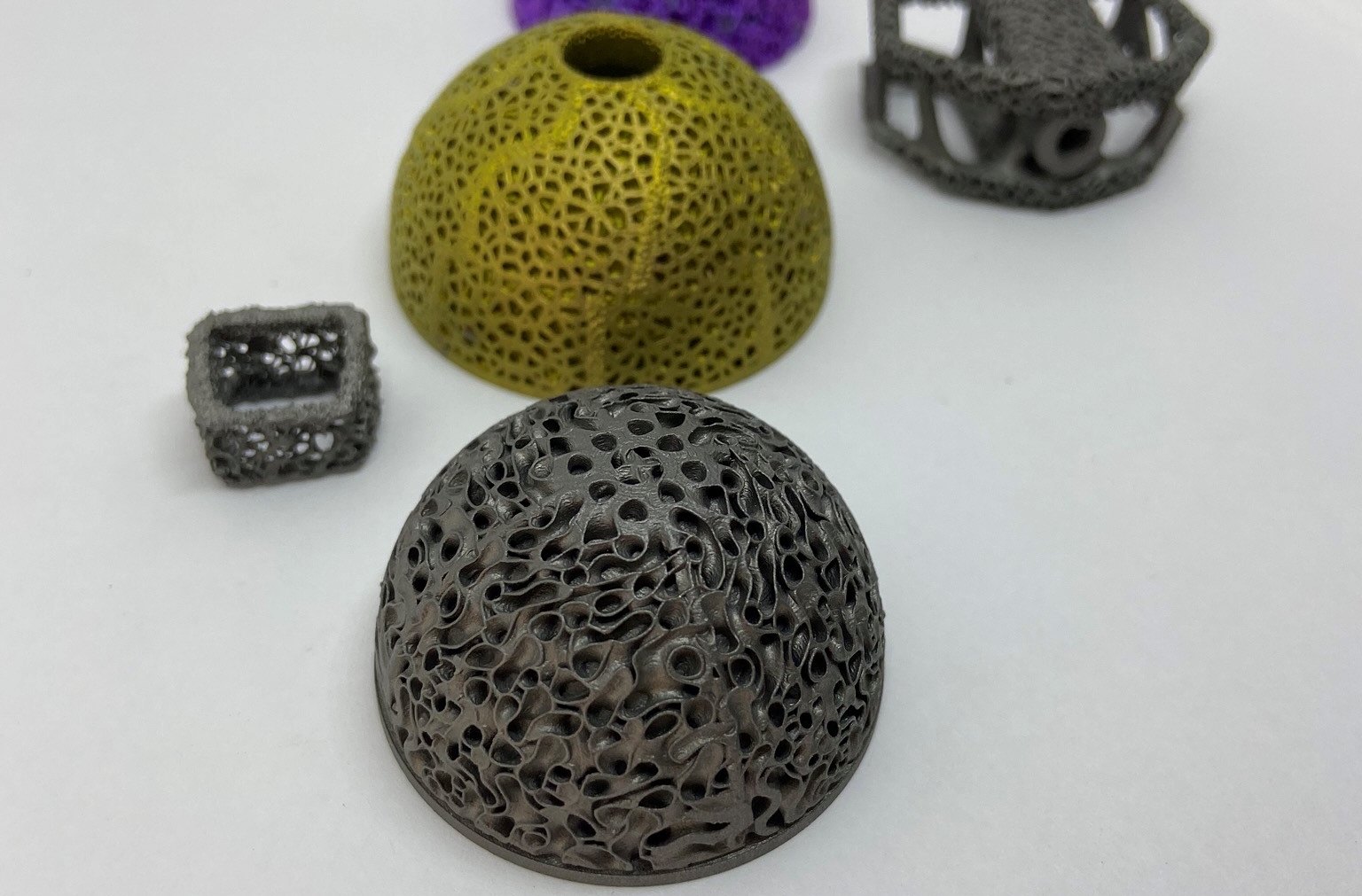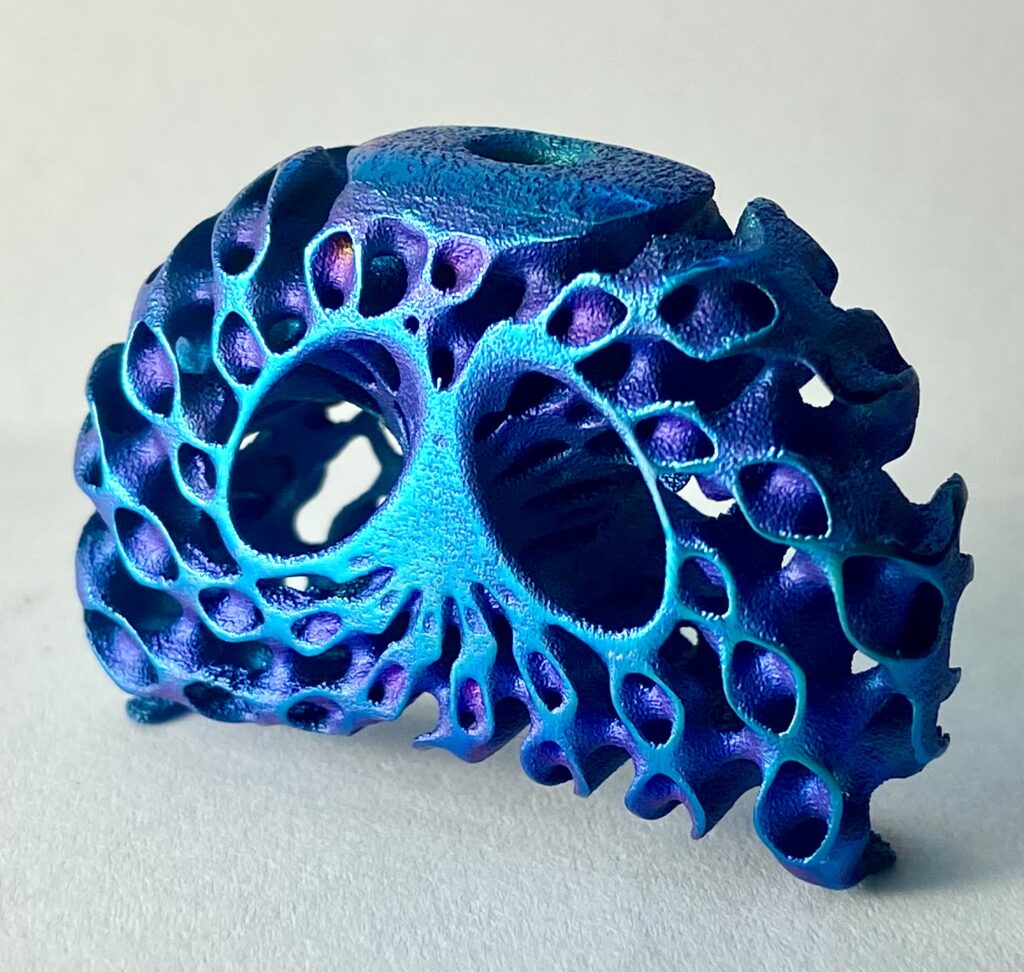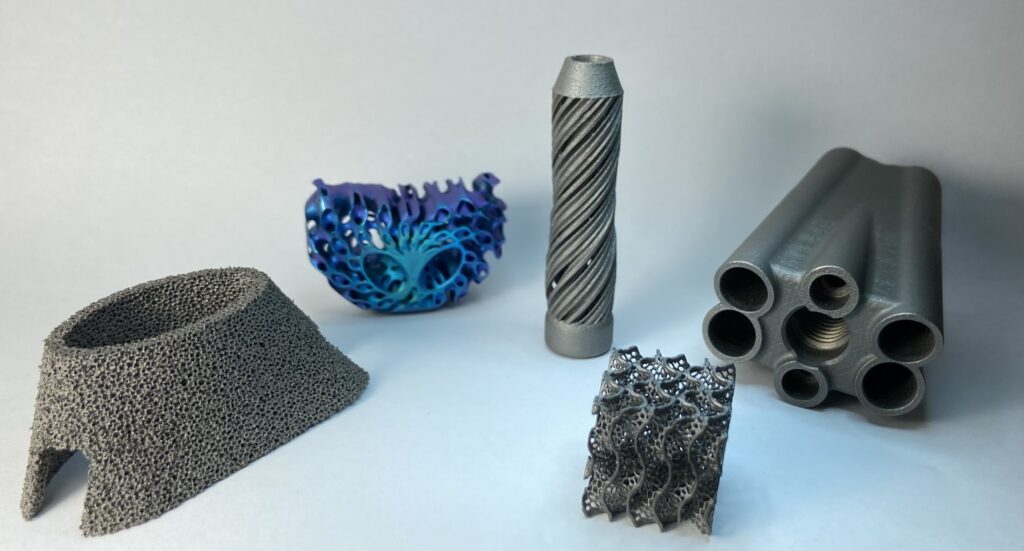 Matthew Shomper is an innovative engineering leader with extensive expertise in the computational design of biologically advantageous medical implants. With many cleared medical devices released into the field now residing in several patients across the world, we couldn’t find a better subject matter expert to get advice on how designers can improve or get started on their computational DfAM journey and how nature might inspire some of the complex structures that once – 3D printed -, help hundreds of thousands of people on the road to recovery.
Matthew Shomper is an innovative engineering leader with extensive expertise in the computational design of biologically advantageous medical implants. With many cleared medical devices released into the field now residing in several patients across the world, we couldn’t find a better subject matter expert to get advice on how designers can improve or get started on their computational DfAM journey and how nature might inspire some of the complex structures that once – 3D printed -, help hundreds of thousands of people on the road to recovery.
Shomper works today as Director of Engineering at Tangible Solutions, a company that specializes in the manufacture of 3D printed titanium orthopedic implants. In this role, he drives the design and development of medical devices from concept development to market launch, and thus helps customers to understand their pain points, timeline, and budget constraints.
3DA: We are used to hearing the term DfAM. Is it something different when it is preceded by computational?
Matt Shomper (MS): It is mostly the same and also a little different. DfAM is a set of principles that govern good design practices and ultimately lead to better manufacturing efficiency. These principles are based both upon the final product (consumer, aerospace, medical, etc.) and specific manufacturing technology (i.e., LPBF, SLA, Binder Jetting, etc.. The preceding term “computational” slightly skews the difficulty. Very rarely (in my experience) do structures become easier to produce the more complex they are. Therefore, this places the additional responsibility on the designer when considering CDfAM.
3DA: Would you say such a framework works best for complex geometries? Or is it a great alternative for those who are not really experts in design?
MS: Computational design is a great enabler of complex structures. Virtually all creative endeavors have limitations. Although boundless creativity exists inside the human brain, a substantial constraint of humans is the inability to parse and process large datasets. Computational design removes this limitation, giving designers the ability to morph this data into functional products, solutions, and actions.
Computational design is not for the faint of heart. The tools are rather inaccessible (with large learning curves) and it usually requires a dual knowledge of designing for requirements and aesthetics at the same time. Good design sense is a must regardless of what’s being created, and I don’t believe computational design is a ‘shortcut’ to get around solid engineering principles.

3DA: Despite Tangible’ extensive expertise in 3D Printed Titanium Medical Devices, we believe each application is unique. What are some of the complex design challenges you’ve faced over the years? And how did you overcome them?
MS: A lot of designs in orthopedic implants revolve around specific porosity targets. This has been well-studied and usually means the outside of the device must maintain a target pore size and volume fraction. On top of this, there are also surface area targets as well as device stiffness targets. Prior to computational design, engineers had to use parametric tools to design structures to meet all these targets. Many times this led to disconnected areas of the devices that each met their specific design target but did not create an elegant combined whole. Computational design allows for this combination to happen much more seamlessly. Each specific structure can be represented as a field, and those fields combined, added, subtracted, averaged, etc. as the designer sees fit according to the specifications. There have been several instances where the customer was surprised that such a rigorous set of variables could be solved with computational design, since typically some items have to be deprioritized. These solutions would not have been possible several years ago.
3DA: The latest Healthcare edition of 3D ADEPT Mag revealed that designers and engineers are increasingly inspired by nature. (How) does it apply to some of the medical devices designs you create?

MS: I’ve always been fascinated by nature and the types of structures that are present when we take a close look at them. Chief among my interests are structures that are both flexible but strong. I’ll use my favorite animal – the peacock mantis shrimp – as an example. The tensor armor in its clubs is capable of some of the strongest impacts known in nature. When reducing such a structure to its base form, a springlike web of disconnected coils can be computationally modeled. I have used such structures to design flexible but strong medical device concepts – such as spinal cages. What’s interesting to note is that not all biomimetic structures are easy to engineer. Or even relevant for product design for that matter. There is as much inefficiency as beauty in nature, so designers must first research the nature of the structures and ensure they are applicable for the problem at hand.
3DA: Simulation is a big part of the DfAM process. With the current advances in software solutions, would you say it is the absolute route to go for any engineering requirements?
MS: I’m a huge believer in simulation as part of a robust feedback loop for computational design. This can be helpful in two ways:
Rapid iterations: Although 3D printing can produce certain products quicker than some traditional manufacturing methods, the best iterations require no monetary spend on products at all. Designs are best assessed using simulation in an “apples to apples” approach. This allows for different structures to be weeded out quickly. The advances in simulation (particle-based physics, homogenization, implicit simulation) also mean that increasingly complex structures can be represented and solved quicker than ever before.
Use of simulation data to augment computational design: This newer advance (brought upon by softwares like nTopology) allows for simulation data (stresses, strains, displacements, etc.) to be drivers in a structure’s fundamental design. The data can be processed, interpolated, then applied to grade the structure in response to the particular load it is undergoing. Simulation combined with computational tools and scripting also allows for an iterative loop where custom solutions can be converged.
3DA: We are on a mission to help more professionals understand the DfAM process and how they can better leverage it. What would you say to healthcare professionals in this regard?

A variety of designs produced by Matthew Shomper
MS: The additive manufacturing landscape is ever changing, with rapid advancements being made continually. To understand any design for manufacturing principles, the designer must understand which technologies they are designing for. Because additive processes can vary greatly, the first step is to become a fundamental user of the specific tech. Then one must develop a mastery of the tools used (i.e., software). As mentioned previously, these tools can be difficult to pick up, but they augment traditional design for additive manufacturing and tend to make things easier once mastery has been achieved.
3DA: Any last words to add?
MS: Historically, designers and engineers have taken parallel pathways. While both consider design an important aspect of what they do, designers fundamentally conceptualize and engineers actualize. Designers are often concerned with the aesthetic and usability and engineers with form and function. Computational design for medical products is a fascinating intersection of art and function. Engineers using computational design to create medical products (in particular) may find that form creates function, especially when considering bio-inspired design. The engineer may find themselves doing far more “design” than they ever thought they would. But this is the beauty of computational design – the creation of elegant yet functional objects!
This article was first published in the March/April edition of 3D ADEPT Mag.
Remember, you can post job opportunities in the AM Industry on 3D ADEPT Media free of charge or look for a job via our job board. Make sure to follow us on our social networks and subscribe to our weekly newsletter : Facebook, Twitter, LinkedIn & Instagram ! If you want to be featured in the next issue of our digital magazine or if you hear a story that needs to be heard, make sure to send it to contact@3dadept.com





